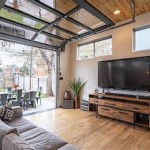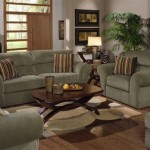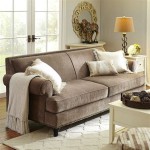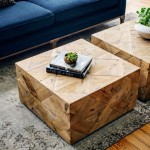Mid-Century Modern Living Rooms: Images of Enduring Style
Mid-century modern design continues to captivate homeowners and interior designers alike. Its enduring appeal lies in its clean lines, functional aesthetic, and seamless integration with nature. This exploration delves into the visual aspects of mid-century modern living rooms, showcasing the key elements that define this iconic style through illustrative imagery.
Emphasis on Functionality
Mid-century modern design prioritizes functionality. Furniture pieces are chosen for their practicality and purpose. Images of these living rooms often showcase streamlined sofas, iconic lounge chairs, and simple coffee tables, all designed with both comfort and utility in mind. Storage solutions are integrated seamlessly into the design, often featuring built-in shelving units or minimalist consoles. This focus on practicality ensures that the space remains clutter-free and promotes a sense of calm.
The emphasis on functionality extends to the choice of materials. Durable and readily available materials such as wood, metal, and glass are frequently used. Images often highlight the natural beauty of these materials, showcasing the warm tones of wood paneling or the sleek lines of chrome-plated steel legs. These materials contribute to the overall aesthetic while ensuring longevity and ease of maintenance.
Connection with Nature
A defining characteristic of mid-century modern design is its connection with the natural world. Large windows and open floor plans are common features, designed to maximize natural light and blur the lines between indoor and outdoor spaces. Images often depict living rooms with expansive glass walls that offer panoramic views of the surrounding landscape. This integration of nature creates a sense of tranquility and enhances the overall living experience.
The connection to nature is further reinforced through the use of organic materials and earth-toned color palettes. Images often showcase the use of natural wood in flooring, furniture, and architectural details. Textiles and upholstery incorporate textured fabrics in shades of green, brown, and ochre, reflecting the colors found in nature. The incorporation of indoor plants further strengthens this connection, adding a touch of life and vibrancy to the space.
Minimalist Aesthetic
Mid-century modern design embraces a minimalist aesthetic, characterized by clean lines, uncluttered spaces, and a focus on essential elements. Images of these living rooms often depict a sense of spaciousness and airiness, achieved through careful furniture placement and a restrained approach to decoration. Ornamentation is minimal, allowing the architectural features and carefully selected furniture pieces to take center stage.
The minimalist approach extends to the color palettes employed in mid-century modern living rooms. Neutral colors such as white, beige, and gray often serve as the backdrop, creating a sense of calm and serenity. Bold accent colors, such as orange, yellow, and teal, are used sparingly to add pops of visual interest and personality. Images effectively capture this balance between neutral tones and vibrant accents, showcasing the sophisticated simplicity of the style.
The furniture itself embodies the minimalist philosophy. Pieces are typically characterized by simple geometric shapes and clean lines, avoiding excessive ornamentation. Images illustrate the elegance of these designs, highlighting the beauty of form and function. This minimalist approach to furniture selection contributes to the overall sense of order and tranquility that defines mid-century modern living rooms.
Iconic Furniture Pieces
Mid-century modern design is recognizable for its iconic furniture pieces, many of which have become design classics. Images of these living rooms often feature iconic chairs such as the Eames Lounge Chair and Ottoman, the Barcelona chair, or the Wishbone chair. These pieces are not only aesthetically pleasing but also ergonomically designed, offering comfort and support.
The use of iconic lighting fixtures is another hallmark of the style. Images may showcase the distinctive shapes of the Artichoke lamp or the Noguchi coffee table, adding a touch of sculptural elegance to the space. These iconic pieces contribute to the overall aesthetic and serve as focal points within the room.
Geometric Patterns and Textures
While minimalism is a key element, mid-century modern design also embraces geometric patterns and textures, adding visual interest and depth to the space. Images often depict the use of geometric patterns in textiles, such as rugs, throw pillows, and curtains. These patterns, often in bold colors, create a dynamic contrast against the neutral backdrop of the room.
Textured materials, such as wool, linen, and leather, are also frequently incorporated. Images highlight the tactile qualities of these materials, adding a sense of warmth and richness to the space. The interplay of geometric patterns and textures creates a visually stimulating environment while maintaining the overall sense of balance and harmony that defines mid-century modern design.

45 Irresistibly Stylish Midcentury Modern Living Room Idea

25 Best Mid Century Modern Living Room Ideas For Timeless Style Olivia Wendel

Mid Century Modern Living Room Margarita Bravo

23 Stunning Mid Century Modern Apartment Ideas Interior Designers Love Edward George

35 Retro Mid Century Modern Living Rooms

64 Gorgeous Mid Century Modern Living Rooms Digsdigs

25 Mid Century Modern Living Room Dining And Bedroom Ideas Spaces

Mid Century Modern Living Room Ideas 15 Expert Ways

Mid Century Modern Interior Design What Is It And Stunning Examples

30 Mid Century Modern Living Room Ideas Retro Yet Timeless Visualhunt








